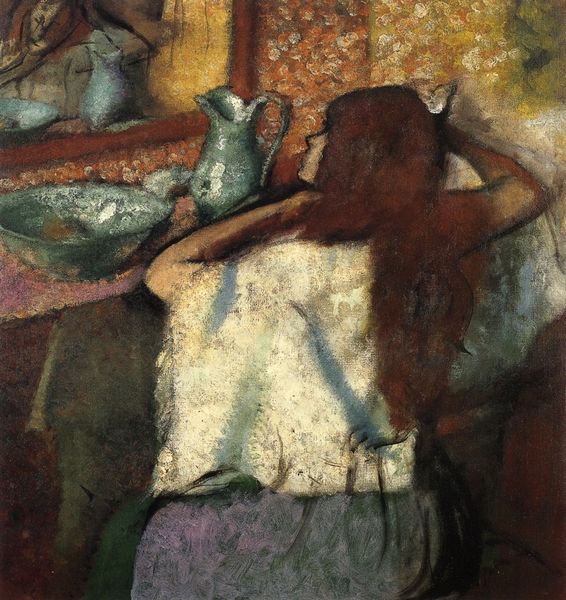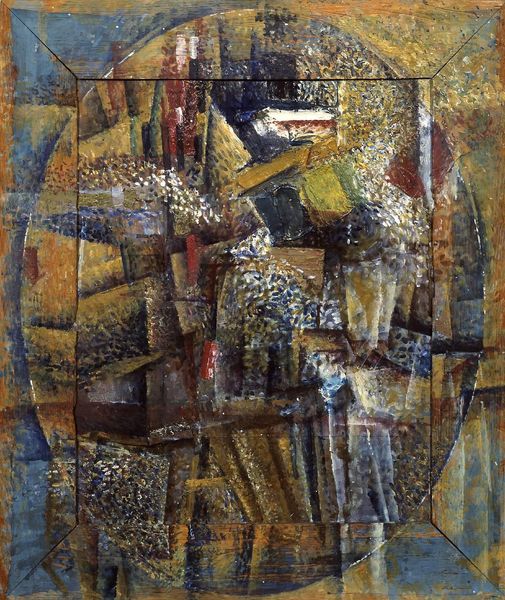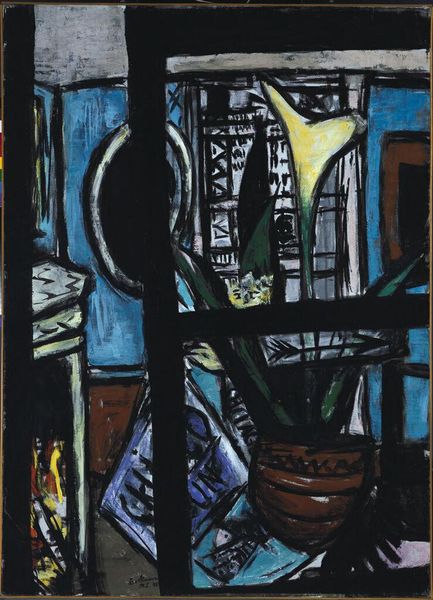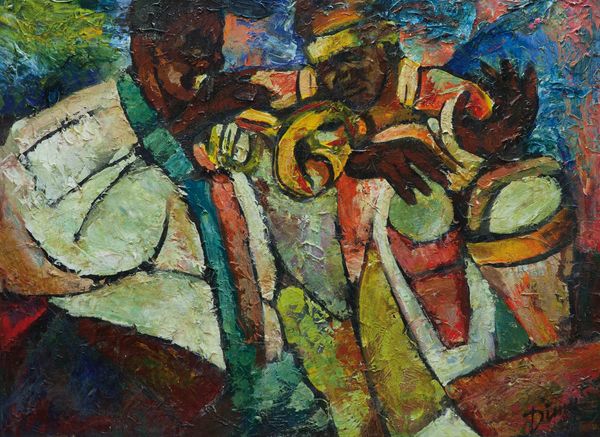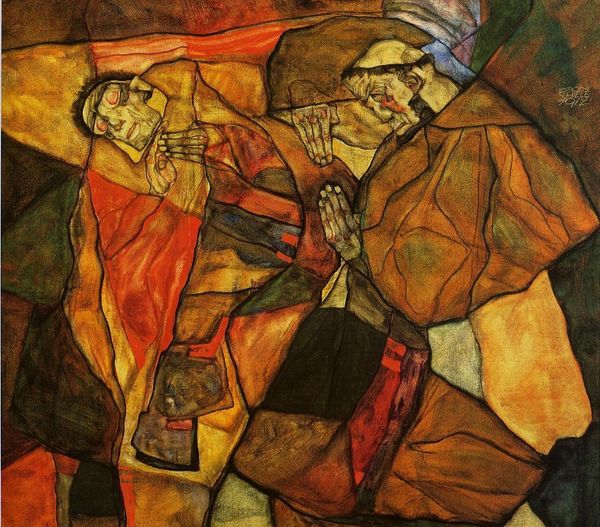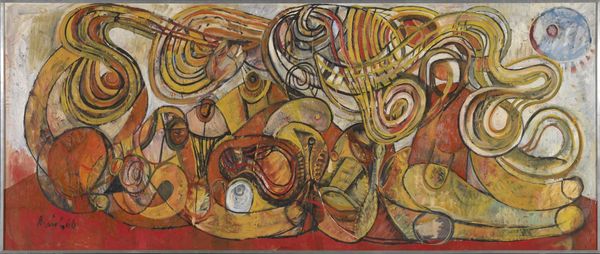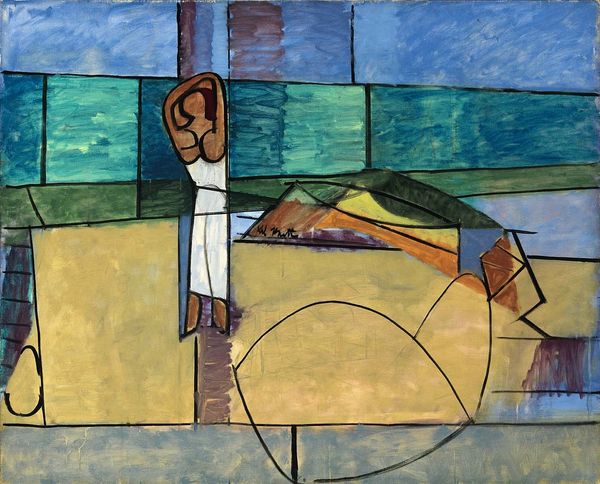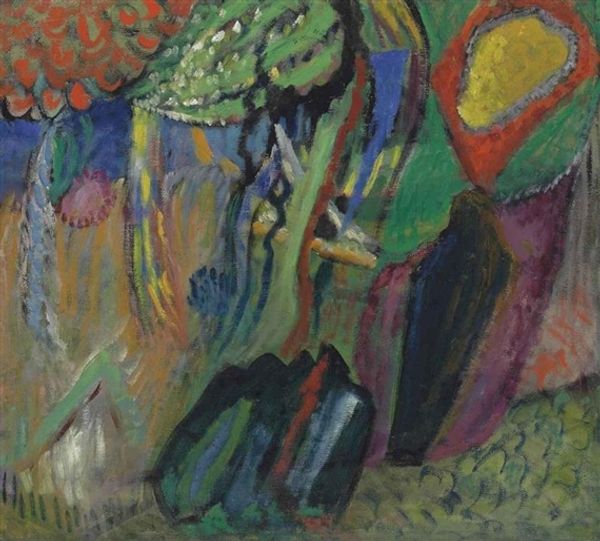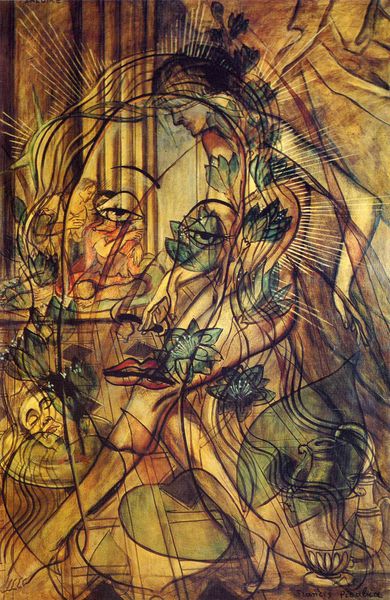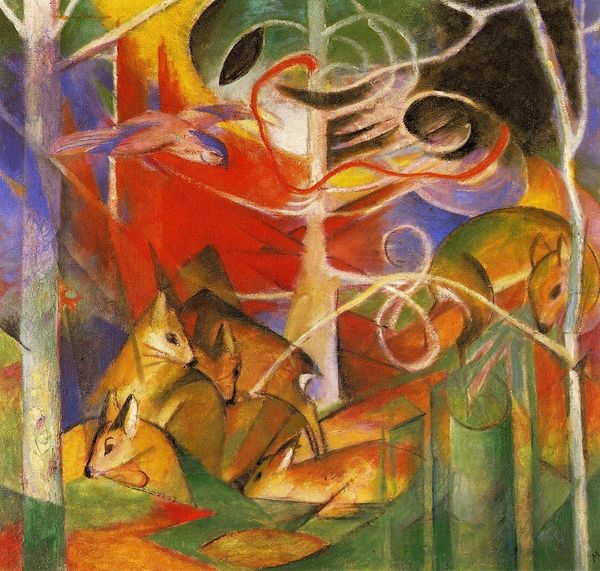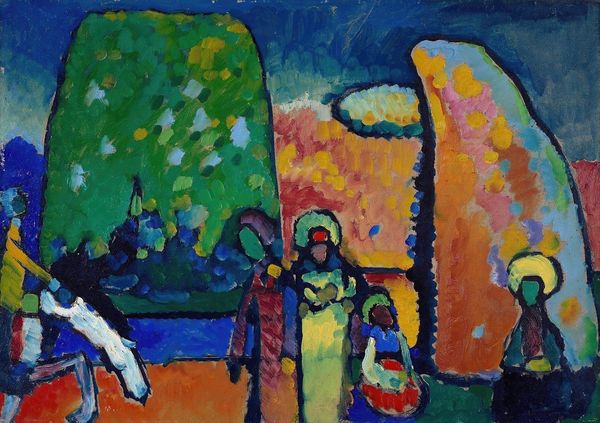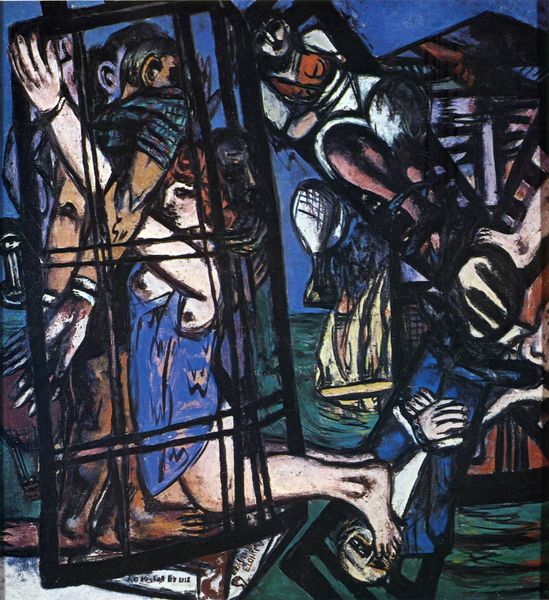
glass
#
medieval
#
figuration
#
glass
#
decorative-art
Copyright: Public Domain: Artvee
Curator: What a flurry of figures and colours, almost like an explosion captured in glass. Editor: Indeed! We’re looking at “At the New Circus, Papa Chrysanthemum,” a stained glass artwork created around 1894 by Henri de Toulouse-Lautrec. He truly tested the boundaries of that medium. Curator: I find that the distorted forms and exaggerated outlines amplify the sensation of movement and controlled chaos one expects to witness in the circus. It’s all about visual drama. Are there medieval tapestries which use this kind of pattern making? Editor: Oh, I see where you are going. Well, beyond medieval styles I feel transported to a sort of turn-of-the-century, bohemian Paris. The performers captured forever mid-act. There's also something dreamlike. Almost akin to Chagall, don’t you think? The floating figures, the hazy colours... it lacks only a fiddler on the roof. Curator: I perceive more of a commentary on public spectacle. How performances of entertainment also engage a very old ritual of power and crowd control through mesmerizing techniques. It echoes symbolic themes from ancient amphitheatres. Even the colour palette—though vibrant—possesses a deliberate, almost muted quality, subtly undermining the apparent joy. Editor: Hmm, perhaps, or maybe Toulouse-Lautrec simply relished the colourful spectacle, capturing a momentary joy. There is even a hint of satire with those row of silhouetted figures—do you agree they are onlookers? Reminds me of Punch and Judy figures; or rather, puppets staring passively into the antics down below. The colours—vivid reds and yellows and purples are not dulled to my eye—evoke those gas-lit circus performances, the electric atmosphere of performers in front of their audiences. Curator: But even the circus ring bears symbolic connotations harking back to ceremonial stages and symbolic labyrinths, reinforcing those timeless themes. Its cyclical nature invites endless readings... and, I believe we should give that back to our listeners so they can construct their own reading. Editor: Absolutely. Maybe it’s just about bright lights, flamboyant performances and Papa Chrysanthemum; an emblem, an avatar for joyful spectacle...
Comments
No comments
Be the first to comment and join the conversation on the ultimate creative platform.
